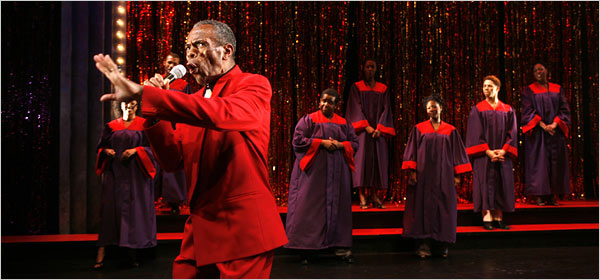From December 2007:
Edward the Second is one of the greatest tragedies written by Christopher Marlowe, the only playwright in Shakespeare’s day who could write as well as him (and sometimes better). It is, without a doubt, the most forthright play written about the passion of one man for another man written before the 20th century.
In this very stimulating play, King Edward the Second of England (Marc Vietor) asserts his royal right to live his life as he deems fit, in the company of his lover Gaveston (Kenajuan Bentley). The gentry, resentful of Gaveston’s influence, seek to have Edward’s love, his king-ship, his very life destroyed.
Marlowe is amazingly subtle in sorting out a shifting sense of who is right and wrong in this story. At first the rebellious knights seem justified in their grumbling at Edward: He lets the kingdom fall into terrible disarray as he spends all his time and energy seducing Gaveston.
However later, when, a much more king-like Edward shifts his affections to another lover, Spenser (Randy Harrison of “Queer as Folk”), the lords immediately condemn Spenser as well – making clear that all their high-minded carping against misgovernment is a thinly veiled excuse for viciously persecuting the king simply for his sexuality.
Red Bull Theater’s Artistic Director Jesse Berger directs this premiere production of Garland Wright’s adaptation with great clarity and precision (if with a love of lurid violence that doesn’t quite jibe with the play’s palace intrigues, which are mostly verbal until the final scenes). He and Vietor make Edward’s failings abundantly clear – his tragic flaw isn’t his love of Gaveston, which truly is an overwhelming irrational force he cannot resist, but rather his inability to distinguish between his public and private responsibilities. This sexy, inky-black, Victorian-styled production is one of the more satisfying and thought-provoking evenings of classic theater in recent memory.










